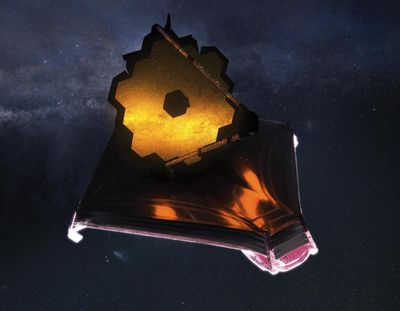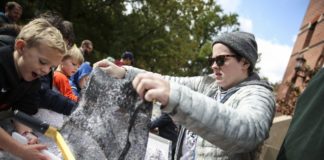
Artist’s conception of JWST. Image Credit: NASA GSFC/CIL/Adriana Manrique Gutierrez
Since yesterday and until tomorrow, JWST is busy with an exciting series of observations as part of the CECILIA project. It is looking at some ancient galaxies to detail their chemical composition. The goal is to gain insight into galaxy evolution during one of the most exciting epochs of the universe.
The light of these galaxies comes from when the universe was just three and a bit billion years old. That’s around the time when most stars formed, a very active period in the cosmos. Knowing the elements and molecules that are being formed and used in these distant galaxies can tell us the journey these islands of stars took to become how they are now.
“We think these early galaxies have very, very different chemistry from our own Milky Way and the galaxies that surround us today. And with CECILIA, we will be able to figure out precisely how different they really are,” the co-lead of the project Dr Gwen Rudie, from the Carnegie Institution for Science, said in a statement.
The project is named after Professor Cecilia Payne-Gaposchkin, the American astronomer who 100 years ago was the first to work out the composition of the Sun and all the stars. Her very correct findings were unjustly criticized but she was eventually proven correct. She became the chair of the Department of Astronomy at Harvard, becoming the first woman to head a department in the University. Among her students were American-Canadian astronomer Helen Sawyer Hogg, astronomer and gay rights activist Frank Kameny, and astronomer Frank Drake, of the Drake Equation.
The first scientific images from JWST came out two weeks ago and were followed by a flurry of discoveries and analysis that wouldn’t have been possible with another instrument, such as the possible observations of the most distant galaxy and the discovery of never-seen-before emissions from around a supermassive black hole.
“The initial images show us that our project will almost certainly surprise us. We’re excited for the dawn of a new era in astronomy,” Dr Rudie added.
As the newest telescope in town, JWST is going to be plenty busy. Carnegie’s researchers are leading another five projects that have booked time with the space observatory.
The team also wants to acknowledge the controversial choice of NASA to not change the name of the telescope once the contributions of James Webb to discriminatory policies against LGBTQ employees became known.
“In seeing the first images and spectra from JWST, I feel deep awe and bouncing-off-the-walls excitement, plus enormous gratitude toward the many people who contributed to the advancements in technology and science that this telescope brings,” Dr Johanna Teske said. “Yet, unfortunately, my positive emotions are shadowed by disappointment and anger that the name of this telescope does not represent an inclusive, open future for astronomy.”







